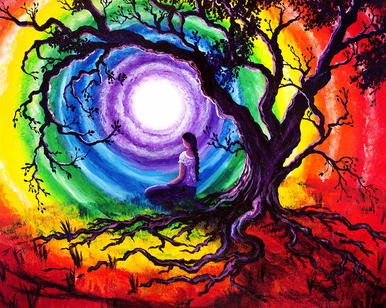 These days the ancient science of yoga is revived again and is becoming very popular. Yoga is now famous not only in India but elsewhere in the world too. Last year in Uttarkashi, I met a lady from Czech, who had learned Yoga in India, many years ago. She had gone back and taught yoga in her country too. Due to so many health issues people are becoming aware nowadays and opting for alternative ways to regain health without any further side effects.
These days the ancient science of yoga is revived again and is becoming very popular. Yoga is now famous not only in India but elsewhere in the world too. Last year in Uttarkashi, I met a lady from Czech, who had learned Yoga in India, many years ago. She had gone back and taught yoga in her country too. Due to so many health issues people are becoming aware nowadays and opting for alternative ways to regain health without any further side effects.
Many yoga teachers have started teaching yoga in parks. Though the yoga practice is becoming very common especially in cities, yet most of the people are practicing it without any basic knowledge. People are practicing it by watching television or by following a yoga trainer without checking if the trainer himself is properly trained or not. Yoga is a very delicate and vast science. It takes many years to understand this science. It is not like joining a gym. It’s more of a life style and a deep philosophy which needs to be followed and practiced with consistency.
Yoga is not a mere physical exercise of practicing different postures. It is a practice based on some principles that affect all levels of our personality and being. Let us understand the concept of yoga.
The word ‘Yoga’ means the communication of the petty self with the higher self. Saint Patanjali wrote, “Yoga Sutras” explaining all the aspects of yoga, which is been translated by many scholars. This science teaches us how to control our mind and attain the supreme knowledge, intelligence and bliss. Yoga is a journey of transforming the mind into high consciousness. Swami Vivekananda, Abhedananda, Sri Aurobindo and others are of an opinion that we cannot kill the mind, but we can transform it.
There are four kinds of Yoga, namely, Raja Yoga, Jnana Yoga, Bhakti Yoga and Karma Yoga. All these are means to attain super consciousness knowledge or God consciousness. Raja Yoga is said to be the best means or the most royal one. Raja Yoga is divided into eight steps. This means apart from the exercise part, these eight steps have to be followed along with exercise and they are as follows:
1. Yama: – This means restraining your mind from negative impulses. This includes non-killing, non-stealing and not receiving gifts that are not on emotion basis, they are rather conditional or obligatory, that is, having a motive behind them. Yama includes truthfulness and continence. Yama also refrains us from injuring others by word, thought or deed.
2. Niyama: – This comprises of cleanliness, contentment, mortification, study and self-control.
3. Asana: – There are various kinds of asanas that is sitting postures. They are the means to get control over our breath. There are eighty four different postures to gain control over the body.
4. Pranayama: – It is the science of breathing. Breathing has a great deal to do with our mental changes and physical conditions. We should learn how to control and regulate our breath, how to take more oxygen into the system and to eliminate all the impurities in the form of carbonic acid gas, when we exhale during our breath. It is not only control of physical breath but also control psychic prana which is the vital life force (the cosmic principle).
5. Pratyahara: – This is to become introspective. Introspection is a psychological method of directing the mind towards one subject. Mind by nature is scattered and runs towards all the objects of senses in different directions. One can’t gain concentration until these scattered energies of the mind are brought into focus.

6. Dharana: – It means concentration. This is the process of concentrating different modifications of the mind on to a point. Firstly, you fix your mind on one object. If your mind is scattered, it would run away. You will bring it back again. It will go in another direction. Let it go, and bring it back again. You have to practice many times before you gain the power of concentration.
7. Dhyana: – When you can hold your mind on one subject, irrespective of all the difficulties and disturbances around, and can think about it deeply, then your mind is concentrated. If this concentration lasts for a certain length of time then it is called meditation. Meditation leads to the super consciousness state. This transcends the realm of the finite world, where time and space vanish and we go beyond thought. This is the realm where all the questions are answered. This is the foundation of existence and goal of Raja Yoga.
8. Samadhi: – It is the super conscious state of mind which is known as consciousness.


